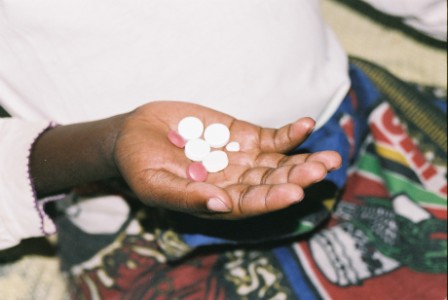Managing the side effects of medication is important in helping people to complete their TB treatment. This is crucial to minimise the impact of TB on a person’s health and to stop them spreading the illness.
The side effects of TB drugs depend on the treatment. These range from mild but annoying to severe, and can sometimes even warrant a change of medication. Dealing with side effects during at least six months of treatment can prove very challenging for people, and is another thing to contend with along with symptoms of the illness itself.
In general, the first line drugs used to treat drug-sensitive TB are better tolerated than the second line medications for drug-resistant TB.

Common side effects
These can include:
- feeling sick or dizzy
- skin rashes
- pins and needles
- flu like symptoms
- In very few cases people may experience jaundice, which is the yellowing of skin or eyes. If this happens, stop taking your medication and tell your doctor straight away.
Patients should always discuss any side effects with their doctor, as it may be possible to change TB medication.
Find out more about side effects by downloading our patient information leaflet About your TB drugs
Added concerns
People with TB should be tested for liver and kidney problems before starting treatment. If there are concerns over their liver or kidney function, careful monitoring throughout treatment will be needed. People with HIV who are taking antiretroviral therapy in addition to TB drugs may have more problems with side effects from certain TB drugs. They will need to be monitored throughout treatment, and may need dose adjustments.
There are a number of ways to help patients manage side effects, including Directly Observed Treatment (DOT). With support, most people with TB are able to manage the side effects of the drugs effectively.
